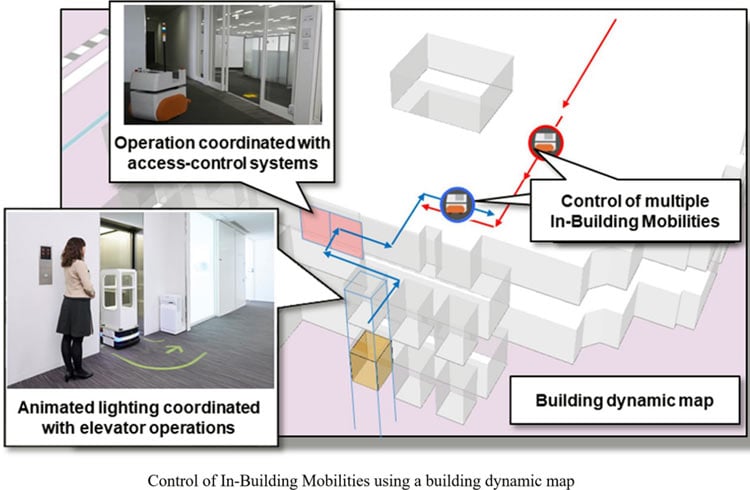
Mitsubishi Electric Corporation has developed a new technology that helps in controlling in-building mobile robots used for cleaning, security, delivery, and guidance. The technology can also be made useful for controlling next-generation electric wheelchairs. The technology uses dynamic maps (three-dimensional maps for buildings that show the status of the building facilities) to achieve cooperative interaction between the robots and building facilities like elevators and access control systems.
The new technology supports safe, efficient movement of people and other Mobilities in buildings, thereby reducing the workloads of building-management personnel. It also helps to realize the idea of smart buildings, in which advanced IoT is deployed for energy-saving and labor-saving environments and where people and robots can coexist safely. When the In-Building Mobilities use elevators or pass by each other in narrow aisles, the system automatically guides them along the best routes to avoid hitting other Mobilities when entering prohibited areas or boarding crowded elevators. The system uses the map to prioritize the movements of people as well as to prevent collisions when passing through an access-control gate.

To help people anticipate the movements of In-Building Mobilities that are getting on and off the elevators, there is animated lighting that gets displayed on the floors in front of elevators. This enables people to smoothly and safely enter and exit elevators together with In-Building Mobility robots. Besides this, the animated lighting is also displayed as In-Building Mobilities move in other areas to let people pass safely even in narrow passageways or when there is poor visibility.
Mitsubishi Electric plans to continue developing the technology in collaboration with developers and mobility manufacturers to introduce a commercial service after March 2021.

